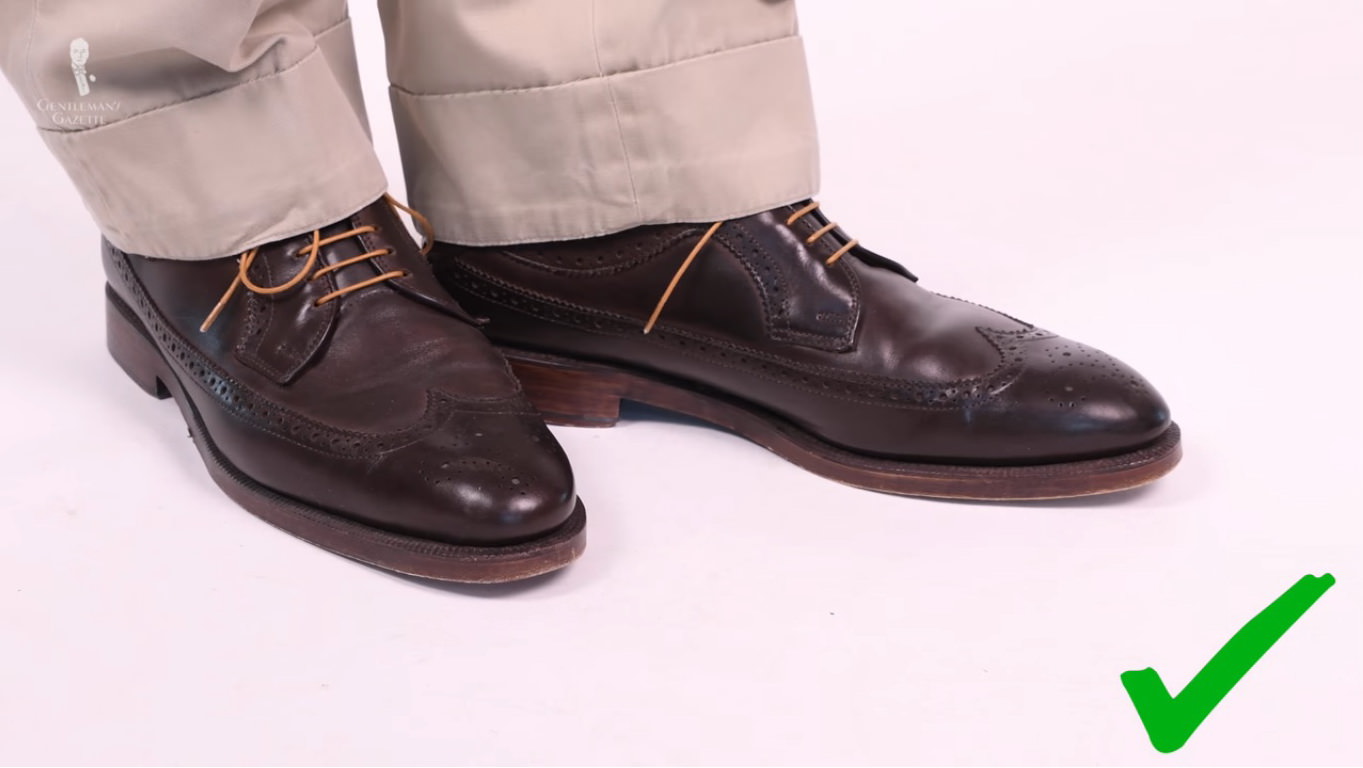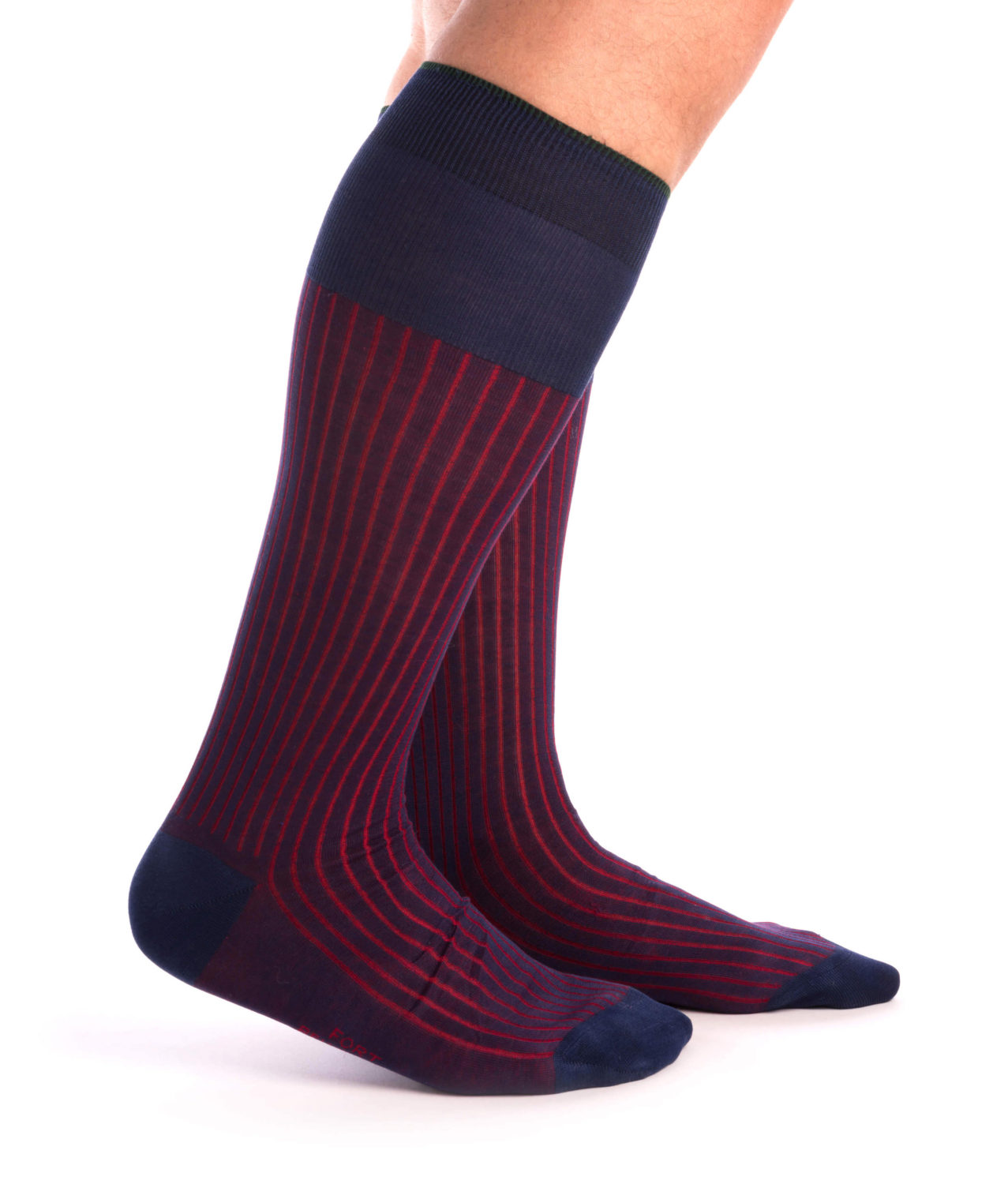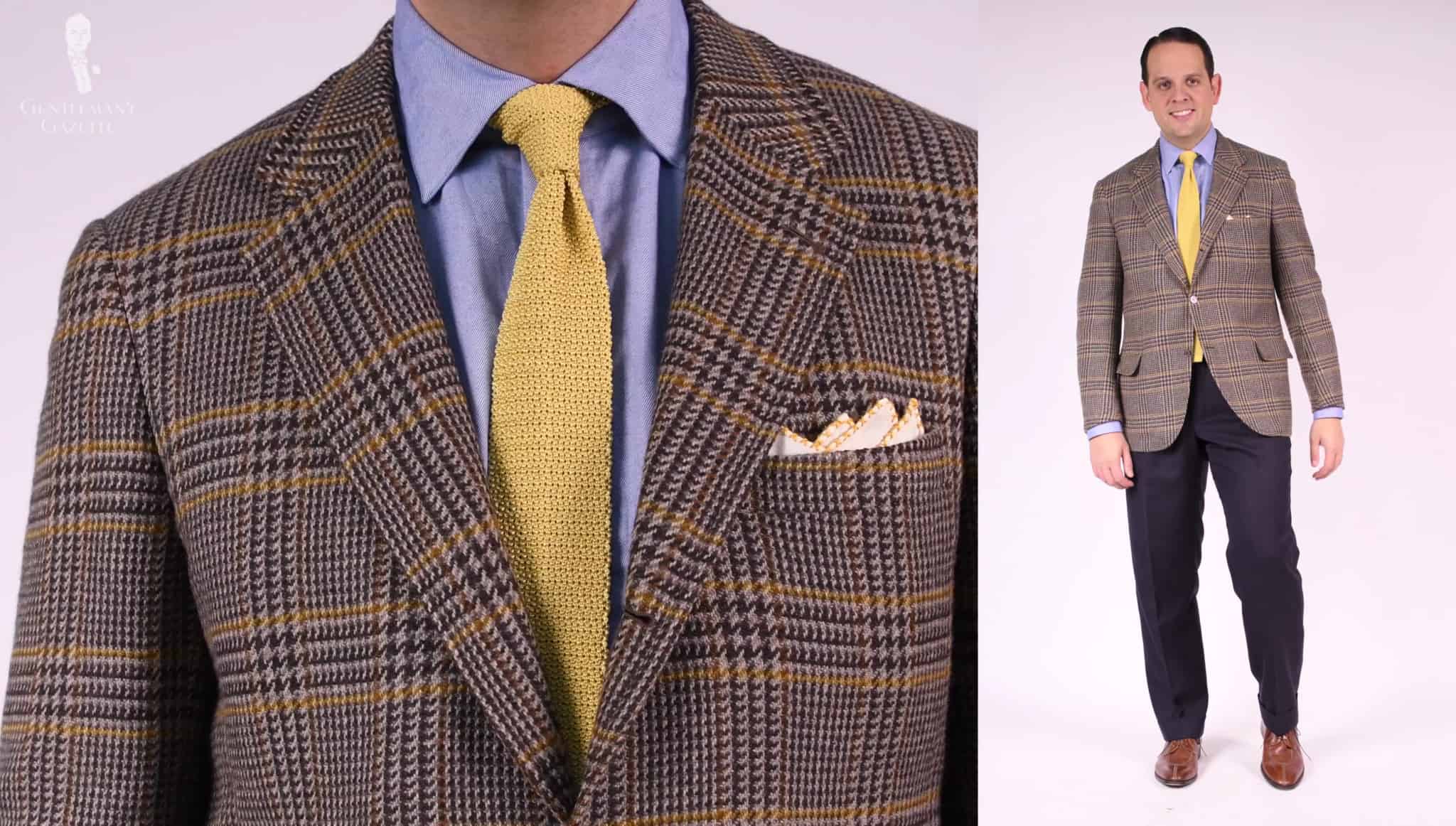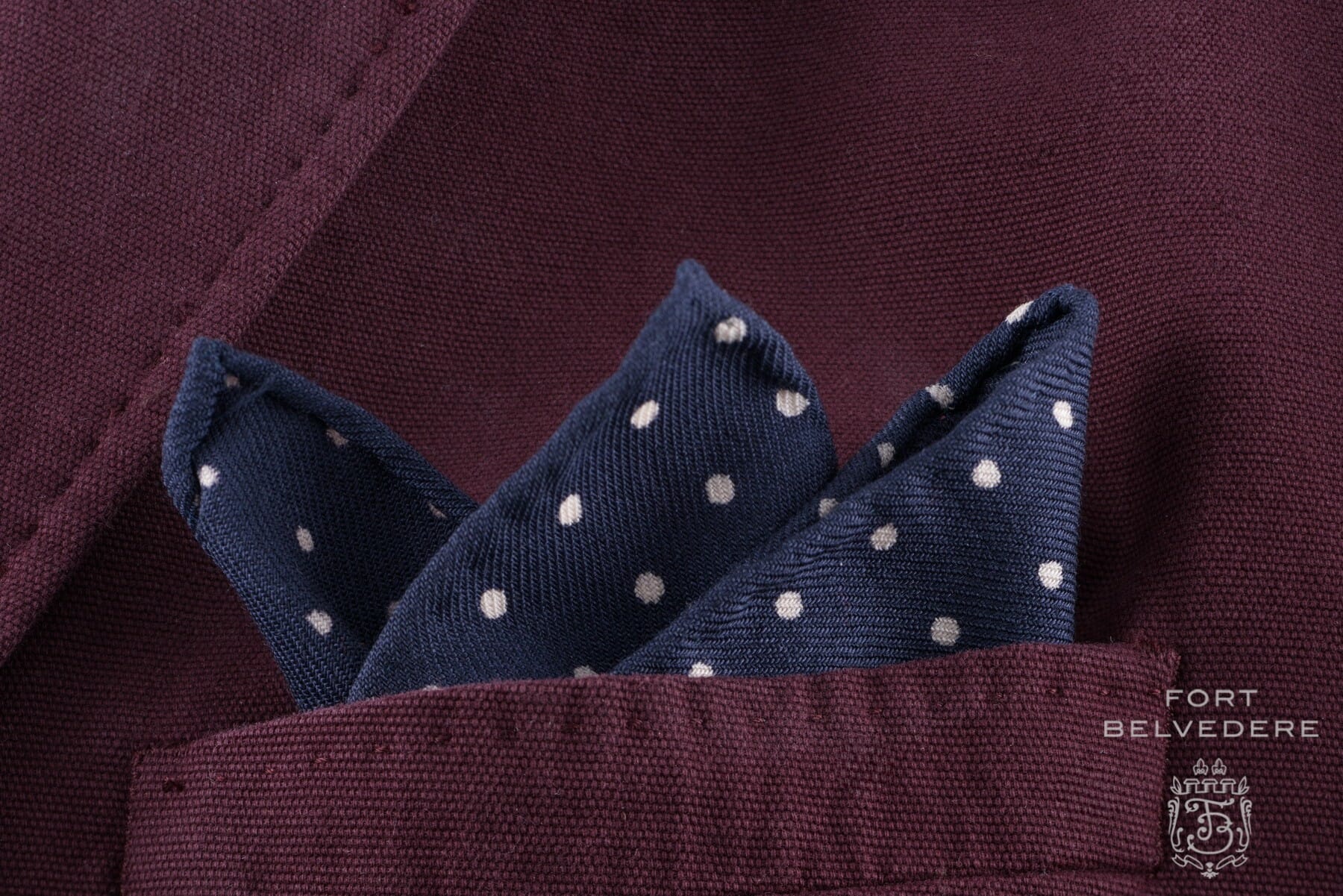Since the 1960s, more and more men have been interested in a more casual alternative to formal suits for everyday outfits. It all started in Hawaii with Aloha Friday where people would wear Hawaiian shirts to the office. Later, it was adopted by many other men and it became Casual Fridays, which was of course more office appropriate and led into the entire category of the business casual dress code.
From there, it caught on to more workplaces and it became more popular over the decades. Of course, men interested in dressing up have now created the opposite which is called Formal Friday but that’ll be the subject of another post.
The Business Casual Dress Code
In a nutshell, it means no suits but also no jeans. Even though a business casual dress code doesn’t include slippers, flip-flops or a t-shirt, it is definitely more on the casual side of things. To balance it, it incorporates somewhat formal features into the wardrobe. Ultimately, how formal or informal business casual actually largely depends on the company and their culture and what people wear there.
At an IT startup, the business casual dress code will be interpreted very differently than at a traditional law firm. Generally, it’s always better to be slightly overdressed than under-dressed and you have to be comfortable in the outfit you’re wearing.

Compared to formalwear, the business casual dress code can include many garments, and as such, can result in more combinations.
So, why should you opt for a business casual capsule wardrobe?
When it comes to formal wear, things are limited; for business casual outfits, there’s a much larger range. Of course, in the flip side, that means by owning a lot of different garments, it may be harder to choose what you’re actually gonna wear.
If you feel overwhelmed or you can’t decide on what to wear, a business casual capsule wardrobe can really help you find those few versatile pieces that you can basically wear with anything else so you don’t have to think a lot about it but you always look well put together. On top of that, having to buy fewer garments means you actually save more money, you have a much smaller wardrobe which means less closet space, and each item becomes more significant.

Some outfit ideas Raphael is wearing to get you started and think about your capsule wardrobe
Building A Lean Business Casual Wardrobe
When going to work five days a week, you don’t want to appear like you’re wearing the same clothes over and over again in the same combinations. However, if you have a few core pieces that you can use to build a wardrobe around, you’ll always look like you wear different outfits when in fact you’re only changing a few things.
A key element of a capsule wardrobe is to stick with earthy tones and dark solids and then to pair them with pastel colors, not bold strong hues because that way you’re just much more flexible in what you combine with what. Also, those bold hues really stand out and people will remember the guy who always wears the orange shirt to work.

A sustainable, capsule-style wardrobe
How Many Pieces Should You Have?
While a full capsule wardrobe typically starts about 37 pieces; if you just focus on business casual, you can have fewer than that.
1. Jackets (Up to 5 pieces)
Blazers
First of all, there’s the jacket, sport coat, or the blazer. Again, it depends entirely on your office if jackets are encouraged, then it pays to have a few more, maybe up to five; if you rarely get a chance to wear them, just invest in one navy blazer. If you’re curious as to what off-the-rack placer is worth its money in the sub $500 category, check out this video.
So, why is the navy blazer such a foundational piece? Well, it is very easy to pair with other things and it’s a very classic garment. By adding contrasting buttons, traditionally in gold or maybe in mother of pearl, you create a certain sense of casualness without going all the way to the bottom of the spectrum. While many blazers come with matching dark buttons, something that’s contrasting helps you avoid looking like you’re wearing an orphaned suit jacket.
While a single-breasted blazer is the gold standard, you can also go with a double-breasted one which makes you look a bit more powerful. Of course, there are hundreds of different shades of navy, from our classic look go with something darker, you can also go with something a little lighter but always make sure you stick with an overall navy feel and look.
Sport Coat
Once you have the blazer, adding sport coats is another essential part of a business casual capsule wardrobe. Subtle patterns such as a little check, maybe a glen check, a Prince of Wales check or maybe a houndstooth, are a welcome addition that just make everything a bit more casual and relaxed.

Raphael wearing a Gagliardi Glen check Sportcoat with Knit Tie in Solid Red Silk, White Spray Rose Boutonniere and Pocket Square from Fort Belvedere
Subdued colors are king for summer, it could be something maybe in white and blue. For winter, it could be something in dark brown and beige. If you want to be a bit more daring, subtle colors and shades of green or in fresco fabrics maybe something you can wear too. In the winter, maybe a tweed jacket in a light herringbone and some form of brown is a great companion.
If business casual is what you wear all day every day to the office, I suggest to get at least one navy blazer and four sport coats that way, you can give them a rest after a long day, the garments will last you longer and it won’t look like you’re always wearing the same thing.
2. Shirts (Up to 20 pieces)
Ideally, you want at least a two week rotation which means 10 shirts but 15 or 20 shirts are probably better. As you might notice, I’m a clotheshorse and I somewhat struggle with a capsule wardrobe. So for me, more is better. So, if you’re taking the capsule seriously, maybe just start with a two-week rotation.

A few of Sven Raphael’s blue dress shirts
I would add only button-down shirts with a collar. you can start with things like an oxford cloth button down, for example or you could have pastel colors in light blue, maybe something off-white or eggshell, you can also have subtle stripes or checks, but if you want to learn more about the first shirts that you should add to your wardrobe, please check out our guide here.
No matter how many shirts you have, either wear with a necktie, and if that’s too formal for the office, then skip that and just unbutton the top button. Never leave it buttoned without any form of neckwear because it makes you look like an altar boy at a wedding.
In more laid back offices, polo shirts may also be an option in colors like navy, white, maroon, green, or maybe brown. Remember, the keys that the colors are neutral and that they go with many other things. Skip the rugby shirts and the bright orange polo shirts. Your shirts should always be tucked in and not untucked which brings us to the next item, trousers or pants.

Neutrals are great–blue, white, navy, maroon, green
3. Trousers (Up to 6 pieces)
At the minimum, you should have three trousers. I think in a more practical world, you need at least six. One of them should be a pair of dress pants that could be in grey, charcoal, or navy. I think for maximum flexibility, something in a medium gray is probably best. If you can get another one and you live in a climate where it gets a bit colder, a pair of gray flannels are always great and pair well with a lot of things. They don’t have to be solids, that can be small pinpoints or maybe even a very subtle houndstooth. Whether pleated or not is entirely up to you.
Of course, the quintessential pants for a business casual look are khakis or chinos. The classic colors are khaki or beige but you can also get them in slightly different colors.
For the colder months of the year, a pair of corduroy trousers can be the perfect companion as they’re warmer because of the thickness yet the whole look and feel are much more casual than let’s say a pair of dress pants. Again, earthy colors, and browns, tans, and greens are your best friends here.

Classic, neutral colors like khaki, sand, beige best for the business casual environment
4. Vest, Cardigans, & Sweaters (Up to 4 pieces)
For the cooler months of the year, having vests or cardigans or any sweaters can be a great addition to a business casual capsule wardrobe. Ideally, knitted one in colors such as gray or beige that are contrasting with your jackets are perfect because that way you can wear them with or without a jacket.
If you want to skip the jacket and just go with knitwear, I suggest a cardigan is great because you can take it on and off very easily without messing up your hair. If you go for a sweater and you wear ties, definitely go with a v-neck otherwise, a crew neck may be an option for you. We always suggest to wear a cardigan or a sweater over a dress shirt with the exception of a turtleneck sweater which in itself can look really dapper with just a navy blazer for example, or a sport coat.
Overall, having about two vests and two sweaters or cardigans is a good number for a capsule wardrobe.

Vests help to change the look of your existing wardrobe
5. Outerwear (At least 3 pieces)
In terms of outerwear, it really depends on where you live. I’d say in general, about three pieces of outerwear are a minimum standard and in cold areas, you can maybe wear a peacoat which is a shorter overcoat.
A trench coat is probably something that’s great wherever you go because it can be worn in the transitioning seasons such as spring or fall, when it’s rainy, it’s a very classic garment. It also comes traditionally in a beige or khaki tone which is more casual than let’s say a navy dark overcoat.

6. Footwear (At least 3 pairs of shoes & 2 pairs of boots)
No business casual wardrobe is complete without footwear. At least three pairs of shoes and two pairs of boots can be enough. For business casual, I suggest you get a pair of brown shoes, ideally, a Derby or an oxford. It can be a suede leather but you want something that’s a little more casual and black cap toe oxford is not the right shoe for this occasion. Having a slightly different shoe such as a monk strap shoe or a loafer is also a great idea.
Personally, my favorite shoe color is burgundy because it’s dark enough to be worn with something a little more formal but casual enough to be worn with jeans and it always works well. In my book, you should have at least one oxford, one Derby, and one loafer. If you’re in a very casual environment, maybe boat shoes or leather sneakers may be acceptable too but that’s just not my kind of style.

Brown derbies or oxfords are the best bet while chukka, Chelsea should be the first 2 boots in your wardrobe.
In terms of boots, I think a suede chukka boot in brown and then maybe a chelsea boot in a darker color such as dark brown is a really great investment. If you’re more gravitating towards the formal side, a pair of balmoral boots maybe with a suede insert in a slightly contrasting color can be really cool, otherwise, a pair of jodhpur boots can be really interesting because even though they have a buckle that’s usually covered by your pants and it makes for a very sleek looking boot.
7. Accessories (As many as you like)
Once you have all your foundational pieces, it’s time for the accessories and best of all, they don’t count in numbers so you can have more of them. Personally, I love to play around with different accessories because with comparatively a very small amount of money, you can create outfits that look very different and provide a very handsome feel. So, people will look at you and think of an entirely new outfit but in fact you haven’t changed anything about the foundations of your wardrobe.
Neckties
For some people accessorizing does not include ties. In my book, it definitely does include ties. Of course, rather than going with traditional threefold silk jacquard woven ties, you can spice it up a little bit.

Changeant silk knitted ties from Fort Belvedere
That means adding more texture and in my mind, knit ties are the ideal companion. If you want a little less texture, a grenadine tie can also be great. Alternatively, you can go with a silk but something like a shantung silk stripe such as this tie here or maybe a wool tie. They all add texture and visual interest, all the while keeping it rather casual.
In terms of colors, you want to pick something that is contrasting and if you have a solid navy blazer, maybe you get a mottled yarn tie such as a knitted one, and you could also pair it with a slightly patterned tie to just make it visually interesting on a different scale.
Bow Ties
If you’re not shying away from bolder statements, you can also wear bow ties but rest assured people will likely remember you as the bow tie guy. That being said, when I just started out with classic menswear, I wasn’t comfortable wearing bow ties but today, I really enjoy wearing them. If you still feel awkward about wearing bow ties yourself, check out our guide on How to Pull Off A Bow Tie to help you overcome that fear.

Green jacket with Shantung Silk Striped Two Tone Bow Tie Bronze Orange, Green, Cream – Fort Belvedere
Pocket Squares
Even if you don’t like wearing bow ties or ties, adding a pocket square to your outfit instantly elevates your look. For business casual looks, I suggest you get something with a nice pattern either in silk or wool patterns that are printed or you could get solid linen pocket squares with contrasting cross stitches on the edge; it just makes everything a little more fresh and not so stuffy and old school looking.
Boutonnieres
While that may not be for everyone. I found that wearing a boutonniere really gets you some attention in a subtle way and compliments or guarantee.

Orange Poppy Boutonniere with linen wool pocket all by Fort Belvedere
Shoelaces
If you have a very limited number of shoes, adding a pair of colorful shoelaces can change the look of the entire shoe without breaking the bank.

Brown derbies with orange shoelaces by Fort Belvedere
Socks
With a business casual dress code, socks are not optional so ideally for an office, they should always be over the calf because people don’t want to see your hairy legs.

Over the calf Shadow Stripe Ribbed Socks Navy Blue & Red Fil d’Ecosse Cotton – Fort Belvedere
Bags
When it comes to bags, I know backpacks are popular but they really make you look more like a schoolboy rather than a grown man. Having a nice brown leather briefcase or bag is really the way to go.

Definitely no backpacks
Business Casual Capsule Wardrobe Outfit Ideas
To put all theory to practice, we put together a little business casual capsule wardrobe and what that could look like for you.
Outfit #1
First, we have a charcoal gray flannel jacket paired with a checked cotton shirt in shades of white and blue. Then, a pair of khaki cotton chinos and brown whole cut oxfords. It’s all tied together with a brown grenadine tie from Fort Belvedere and a brown patterned silk pocket square likewise from Fort Belvedere, has tones of brown and blue that’s tying everything together. For my socks, I went with something in navy and royal blue striped by Fort Belvedere and they provide a nice contrast between the khaki chinos and the brown shoes.
In this ensemble, the jacket and shoes are more formal, the shirt and trousers are more casual which leads to a happy medium. The accessories can all work with a variety of formalities and the colors of the outfits which are mostly neutral provide a certain element of harmony.

Switch up your jacket
Let’s say you don’t have a gray flannel jacket, you could also have a more casual one like a tweed jacket. Here, I have one in a green and burgundy tone, it has a very nice herringbone pattern and I’m adding a light blue paisley silk pocket square which picks up the color of the shirt. I could combine it with a pair of brown penny loafers or maybe even a pair of olive green shoes, picking up the color of the jacket.
Also, you could wear a brown model donegal tweed jacket and I again would switch up the pocket square; here I have something that is purple with orange and green, it’s a wool-silk pocket square from Fort Belvedere.
If you don’t have tweed you can wear any type of sport coat. For example, here it’s a brown sport coat in worsted wool with a red windowpane over plaid and a handcrafted linen pocket square and pale red, it has some nice contrast edge stitching, it picks up the red color of the check and the white of the shirt. Of course, you could also wear brown penny loafers for example or maybe a pair of cognac colored monk strap shoes.

Outfit # 2
A somewhat different outfit is this brown and mustard yellow prince of wales check sport coat in a nice soft cashmere. I’m pairing it with a light blue cotton flannel dress shirt and cuffed navy dress pants or slacks with pleats.
I’m combining it with a pair of brown Norwegian split toe shoes and a yellow silk knit tie from Fort Belvedere. The yellow picks up the other yellow tones in the outfit and ties it all together but it also provides enough contrast on the shirt. Again, to make it all uniform, I’m pairing it with a pale yellow linen pocket square. The socks are navy and yellow stripes so I picked up the yellow but also work with the navy pants and provide enough contrast with the shoes.
If you look at this outfit, it’s very different than the first one because here, the jacket and the shoes are more casual and the trousers and the shirt are a bit more formal. The accessories here are more casual than in the previous example but they are still versatile and harmonious in color.

Swap the jacket
Of course, you may not always want to wear a jacket so you can also wear sweaters. For example, here I’m wearing a pastel blue oxford cloth button-down shirt with a white v-neck tennis sweater and blue accents which is very preppy and I like to wear it. I’m pairing it with black corduroys. For footwear here, I choose black balmoral boots with a suede insert and even though they’re the same color, they appear different to the eye because the suede reflects light differently.
Whenever I have sweaters, I prefer v-necks because they allow me to wear a tie which looks very handsome and makes people look into my face. Here, I have a red and white houndstooth tie and a silk bourette which is a very coarse weave and underlines the casualness of the ensemble.
I can also wear it with a paletot overcoat and a nice scarf or maybe a boutonniere and you could never tell that I have a rather casual outfit underneath of it.

Keep in mind, these are just a few outfit ideas that are supposed to get you started and think about your capsule wardrobe in a way that you can take certain pieces, change them up and they look very very different even though there are just maybe two items in your entire outfit that have changed.
Conclusion
Style is manifold and you can work with whatever you have in your wardrobe. Just experiment and it’s important to start and sooner or later you’ll find some favorites.

Raphael wearing a business casual outfit that could be together for a capsule wardrobe.
